NOVEMBER
November signifies Remembrance, the capital ‘R’ conjuring up the red poppy which
are already on sale. This year it takes me back to August which may sound a bit odd
but let me explain.
My summer included looking after three grandsons (aged 8, 10 and 12) which
included staying in France for a few days before driving down to Northern Spain,
heading to Santander where my daughter, their Aunt, lives with her family. The
cousins had a great time together and we celebrated the birthday of Oliver, my
eldest grandchild, in a lovely restaurant across the bay. All too soon, it was time to
return to France for the rest of our holiday.
We drove north again to the town of St Junien to stay overnight. The following
morning, we headed off to the nearby large village of Oradour-sur-Glane. This is a
very special place and a very emotional place to visit. It remains exactly as the
German soldiers left it on the 10 th June 1944. We had told the story to the boys, but
the reality was impossible to convey.
You enter the site between two walls, each covered in pictures of the people who
died that day. The barbarity of war comes home quite quickly looking at photos of
real children, babies, one only 8 days old. The adults reminded us that these were
people experiencing war but smiling for the cameras! My grandsons were shocked!
We strolled through the site, many buildings destroyed on the day and now 80 years
of neglect leaves it like a strange museum. The boys were fascinated by rotting cars.
I was moved by the old sewing machines rusting in the Tailor’s shop - just like
grandma used to have. The remains of a pram haunt me now.
On the day, the men and women were separated. The school teachers took the
children to the square when told to by their captors. The men were distributed in
small groups around the village. The women and children were taken to the church.
At exactly 4pm an explosion was heard and the killing began. The men were shot,
and then their bodies were set on fire. At 5pm the soldiers set a box that created
smoke in the church. Some women ran to the door only to be met by machine guns,
forcing them back inside. The church was set on fire and all inside died. 642 people,
human beings like you and me, died on that day. The 200 German soldiers marched
away when their ‘job’ was finished.
General de Gaulle wanted to preserve the ruins of Oradour, so they might bear
witness to mankind, the consequences of the barbarity of war. They have been left
and some preservation is taking place. My Remembrance Day this year has even
more meaning.
Anni Holden Calver, Secretary of Shropshire Churches Tourism Group (SCTG)
www.discovershropshirechurches.co.uk
Trustee of Caring for God’s Acre and Churchyard Task Team cheerleader!
www.caringforgodsacre.org.uk
OCTOBER
The autumn-evening. The field
Strewn with its dank yellow drifts
Of wither'd leaves, and the elms,
Fade into dimness apace,
Silent;
A tiny bit of Matthew Arnold’s poem Rugby Chapel which sums up Autumn quite well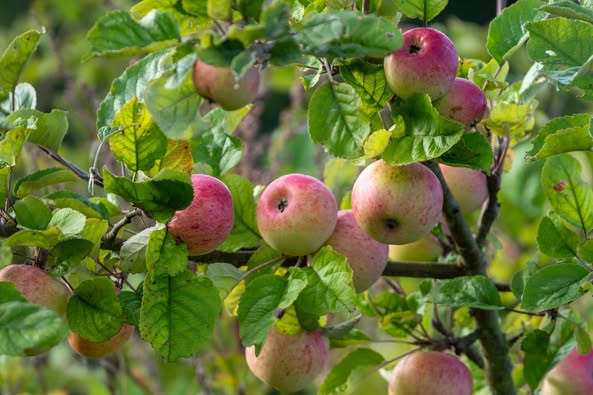
I think. A very popular Victorian poet, he was the son of the famous Headmaster of
Rugby School.
Yes we are in October and it really is Autumn now. Those winds that brought down
all those leaves last month were just playing with the seasons. Now we have a
month which slowly gets darker each day, until that brief respite when we award
ourselves, that short-lived lighting on the last Saturday/Sunday night of October
(27 th /28 th ).
So what might brighten our lives through this 10 th month of the year that used to be
the 8 th month (octo gives it away) but survives anyway in a very colourful way. We
see trees turn from green to shades of amber, orange and ochre. Mushrooms pop up
and falling leaves hide animal activity around us. For the Churchyard Task Team it’s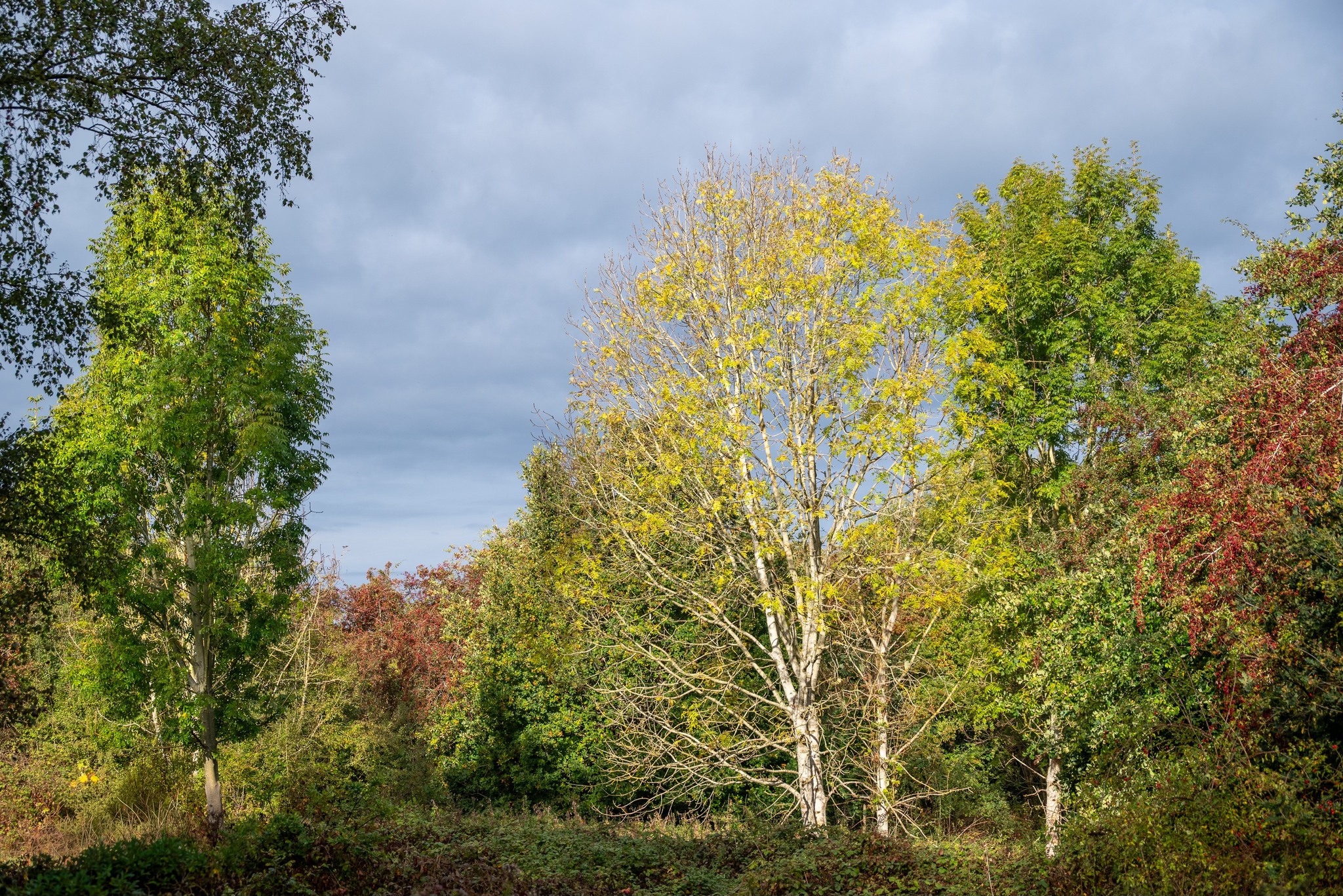
still a time for cutting back, making wood piles and scything in the right places.
The saints can help us out a bit too. There are many churches dedicated to St
Francis, one of the best known, being the patron saint of animals, and who’s not an
animal lover? We have few dedicated to him locally but across Europe he is probably
top of the Saints parade! He is remembered on the 4 th October but he is also a
reminder that Christmas is not too far away, Why? Because he invented the
Christmas crib scene - he put some figures outside his home in Grecchio with the
help of his friend, Friar John. Many life-like cribs appear all over the world today and
many a home brings one out to mark the festive season. (I have a lovely crib I
bought in Palestine on one of my trips to there, working as a journalist.)
Later in October we also have St Luke, the patron saint of doctors and best known
for writing one of the 4 gospels. He is also associated with St Luke’s little summer, a
weather phenomenon which sees a brief spell of warm temperatures around his
feast day on the 18 th October. Let’s hope it happens this year!
Anni Holden Calver, Secretary of Shropshire Churches Tourism Group (SCTG)
www.discovershropshirechurches.co.uk
Trustee of Caring for God’s Acre and Churchyard Task Team cheerleader!
www.caringforgodsacre.org.uk
SEPTEMBER
The 1 st of September falls on a Monday this year. I like this, and find it neat and tidy! I also like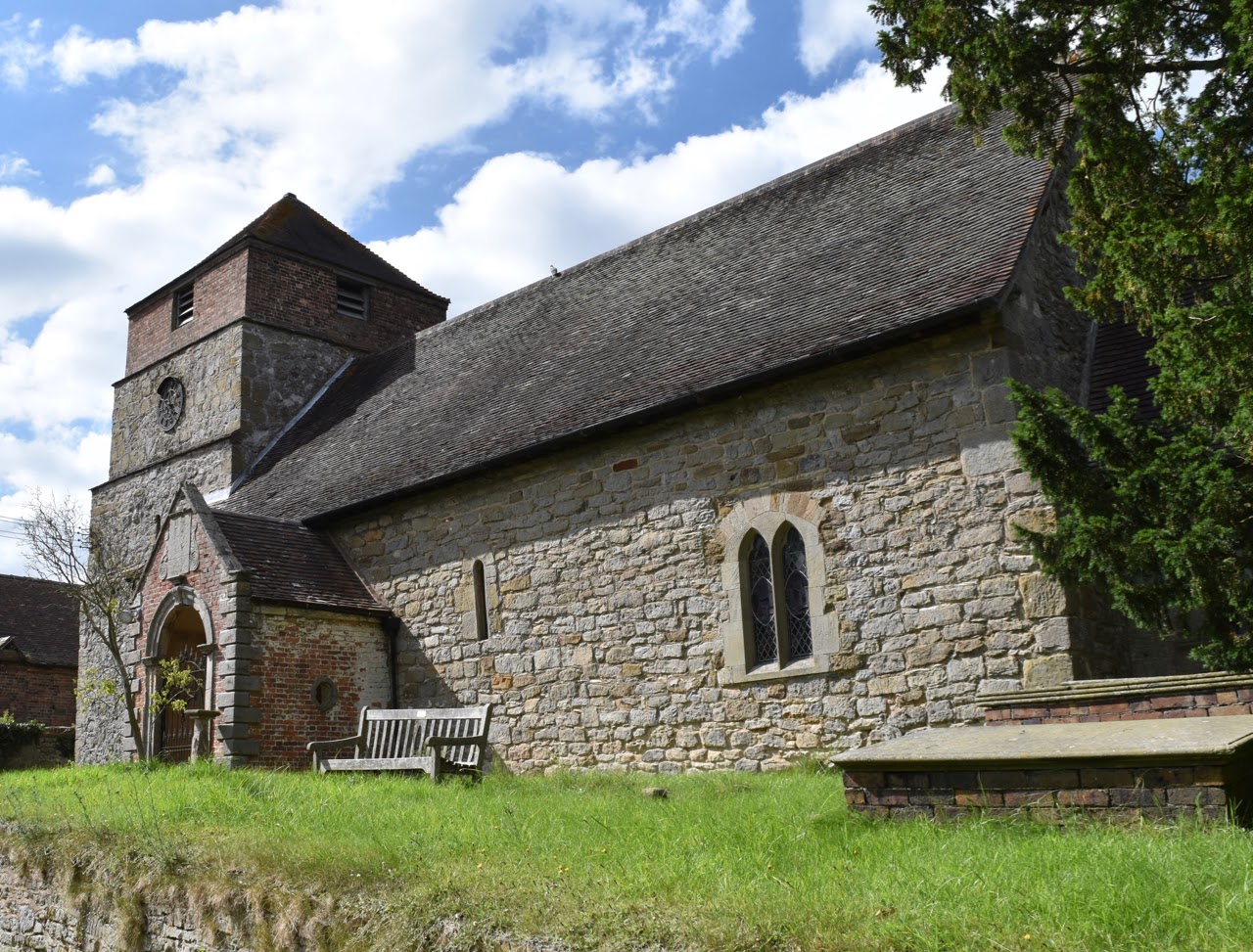
September as it’s like New Year but not with capital letters. It marks the end of summer, too, as we
wrap up the season and put it away until next year. The return to work after the holidays, the
infants back to school, the children nervously starting ‘big’ school, Mums are back to packing
lunches, Dads are sorting out the sports kits as the winter games change places with their summer
cousins and so the year (sort of) starts again. It’s another chance to make some resolutions.
So what else can September offer? For 17 churches in Shropshire it’s the time they celebrate the
saint’s day their church building is dedicated to; so 5 St Giles, 1 St Gregory the Great, 1 St Edith and
10 St Michaels. I decided to find out something about St Giles, who has come up over the tea break
when us scythers are out with Caring for God’s Acre. (our conversations range far and wide!).
St Giles starts off the month as his feast day is on the 1 st so a neat and tidy way to start (see first line
above!). He has been very popular through the centuries, since the 7 th , which is when he was born,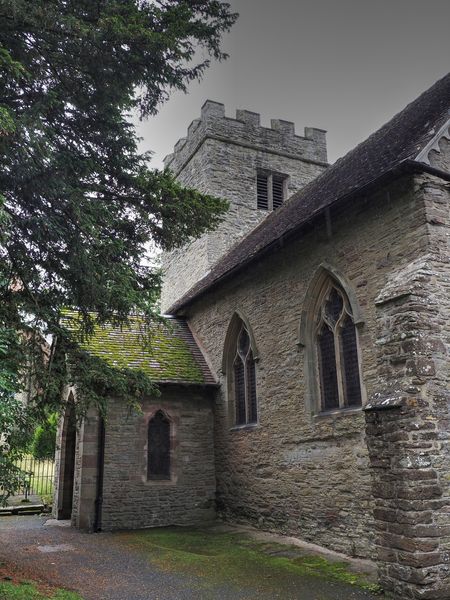
maybe in Greece. He moved to France close to the village of Saint-Gilles, where he lived as a hermit.
Each day he was visited by a deer hind that fed him her milk. But one day the king was out hunting
and the clever hind hurried to the hermitage for protection. The king fired his arrow and instead of
hitting the deer, it hit Giles instead and he was crippled for life. He dies at the beginning of the 8 th
Century but that did not stop his popularity. On the spot of his tragic accident, a monastery was built
and over time he became the patron saint of disabled people, beggars and lepers.
Leprosy was common in the Middles Ages, coinciding with the building of stone churches. The
general population were not keen on lepers sharing their space, so churches were built on the edge
of towns and villages where lepers could attend services separately. They were dedicated to St Giles.
In some churches you will find the “squint” an angled opening in the wall near the altar where lepers
could see the service from outside the building. Barrow church was a chapel of Much WenlockAbbey and Ludford, a chapel of Bromfield priory. In Shrewsbury, St Giles on Wenlock road was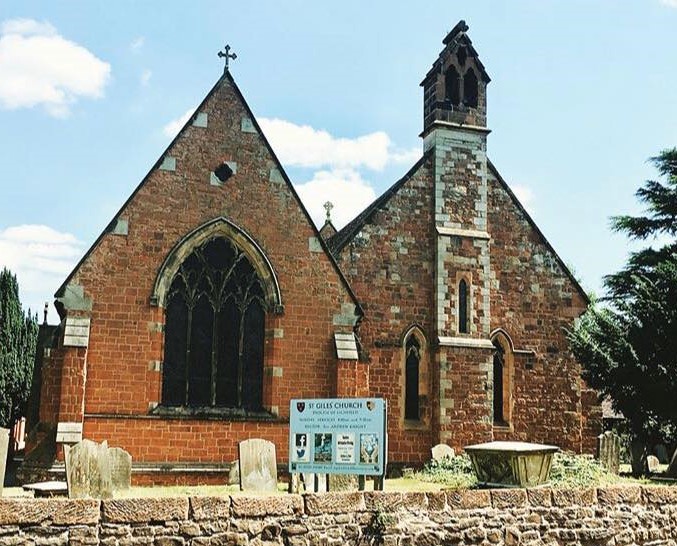 recorded as a church in 1136, and by 1155 there was leper hospital on the site. Nothing of the hospital survives today, but St Giles church survives as a parish church in the town. Chetton and Badger are also dedicated to St Giles.
recorded as a church in 1136, and by 1155 there was leper hospital on the site. Nothing of the hospital survives today, but St Giles church survives as a parish church in the town. Chetton and Badger are also dedicated to St Giles.
Anni Holden Calver, Secretary of Shropshire Churches Tourism Group (SCTG)
www.discovershropshirechurches.co.uk
Trustee of Caring for God’s Acre and Churchyard Task Team cheerleader!
www.caringforgodsacre.org.uk
Photos:- Top to bottom:- Barrow, Ludford, St Giles Shrewsbury
AUGUST 2025
I had a lovely time recently in a churchyard, with the Churchyard Task Team. We go out most weeks
and ‘tidy up’ where we are working. We all love it in the summer as it is time for the annual cut of
the grasses and flowers.
It was bit of a surprise to find the village school pupils waiting to see us and to find out what we
were doing in their churchyard. Their school overlooks the 12 th century building, which is surrounded
by a quite large burial ground. First they wanted to know why we use old-fashioned tools like
scythes instead of a mower. We soon convinced them that manoeuvring a modern mower even
without wires was difficult because of the tombstones.
So what else do we do? We explained that scything did not cut the grass as close to the ground as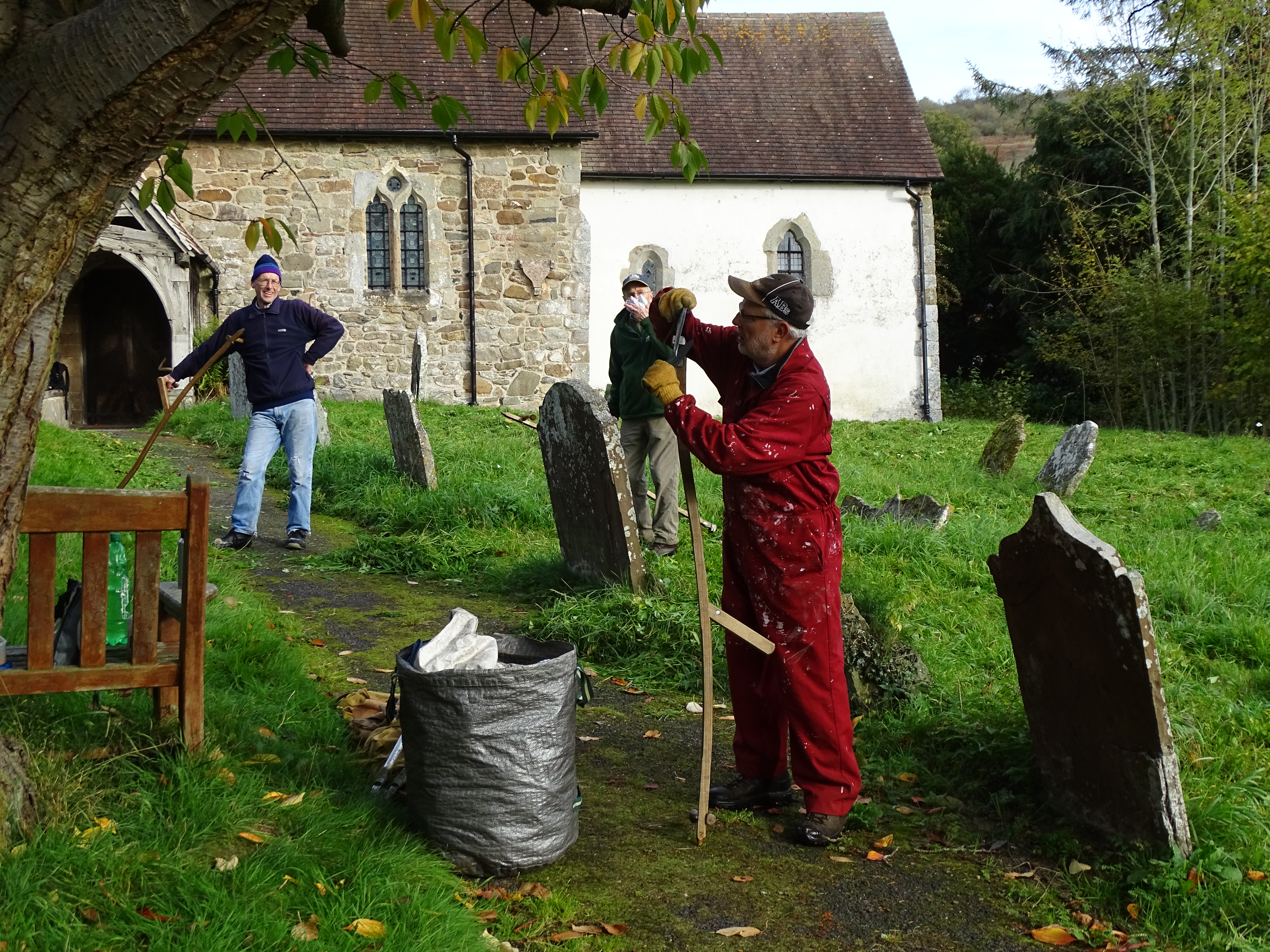
mowers did and this was better for the wild life in the space. We also did not use fertiliser or pesticides and we could control the space just as easily by nurturing the ground. We try to create the best places for small mammals like mice, shrews and the threatened dormouse. With fallen branches we make habitat piles, which offer warmth and protection to small animals from big ones.
We do cutting down too. We might trim some ivy, not because they kill the trees they are leaning on, but because ivy is an amazing plant. It offers shelter to birds and insects in the winter when trees are bare. In Spring the leaf growth provides hidden spaces to build a nest so big bad birds do not see chicks as their next meal. They eat the berries too.
And what about the headstones? They can tell us so much about the people who lived here hundreds of years ago. We cannot read one much before 1700 as the weather has usually worn the stonemasons work away. If your family has lived in the village for a long time, you may be able to find names just like yours. Discovering your ancestry is very popular today, encouraged by television programmes.
The children had to go back to school as it was playtime for them and work time for us ageing scythers. We had learned a lot from each other. We had touched on history in the building, learned a lot about the environment, compared old and new with surprising outcomes. We had also agreed that brambles are good for blackberries and in patches are good places for our wild life to hide but it
does hurt if you got scratched.
So we started our work after our tea break and managed to get everything done that we planned to
do. The main lesson learned though is that maybe we do not use these village havens for education
as much as we could. So if you’re involved in teaching maybe this article will encourage you to look
again at what is just down the road.
Anni Holden Calver, Secretary of Shropshire Churches Tourism Group (SCTG)
www.discovershropshirechurches.co.uk
Trustee of Caring for God’s Acre and Churchyard Task Team cheerleader!
www.caringforgodsacre.org.uk
pic, Caring for God's Acre team at Hope Bagot.
JULY 2025
July already! The last month must have been the fastest month in 2025 - well in my life if not yours.
The second half of the year begins now. So what do we know about this particular month? It used
to be called Quintilis, the fifth month of the year. But when the very famous Julius Caesar died, the
Romans decided his achievements were worth remembering and as he was born in this month, they
changed its name to July in his honour. Julius was associated with youthfulness, a feature admired in
Roman times.
In many cultures around the world, the number 7 and thus the 7 th month holds deep spirituality; it
connects transformation, creativity and personal empowerment; it reveres leadership. All positive
vibes I think.
So what else do we know about this very strong month? It is summer so hopefully lots of sunny
weather and holidays. Dare I mention barbeques and the enjoyment they often bring particularly as
family events? Then there’s Wimbledon on the TV too. And did you know that the flower associated
with this month is the larkspur or delphinium, one of my favourites. I have had a good show in my
flower beds since last month, and still producing startling bright blue flowers.
Celebrations this month include the 4 th July marking the independence of the United States from us
Brits and Bastille Day on the 14 th in France, as they recall their successful revolution more than 200
years ago. For Shropshire Churches Tourism Group we have 5 saints’ days to mark. On the 15 th it’s St
Swithun’s Day, who I told you all about a couple of years ago. Cheswardine church will be
celebrating. On the 20 th it is Margaret of Antioch and Moreton Say and Ratlinghope are the two
Shropshire Churches dedicated to her. But goodness knows why. It is believed now that she never
existed but that did not get in the way of good pious stories about this woman and she had quite a
cult going in the later Middle Ages.
On the 22 nd , we remember a far more famous person, St Mary Magdalene and there are four
churches with her name, Ashford Carbonel, Bridgnorth, Hadnall and Quatford. Finally we have St
James at Cardington and Shipton on the 25 th of the month. He will be celebrated in many countries
around the world, but mainly in Europe. The pilgrim route to his resting place in Santiago de
Compostela in Northern Spain is still very popular today and the church dedicated to him there, will
be full to overflowing on the day.
So lots to celebrate and enjoy this month. If your name is July, Jules, Julie or Juliet, you can
celebrate your name too. Oh and before I forget the 31 st July is the start of the Oyster season. Not a
big deal in a landlocked county like ours!
JUNE 2025
It may be June now but I m going to tell you about a great day out I had last month and whether that
experience can be repeated or whether there should be a different day out? U3A Shrewsbury
branch asked Shropshire Churches Tourism Group if they could provide a day out, which would tell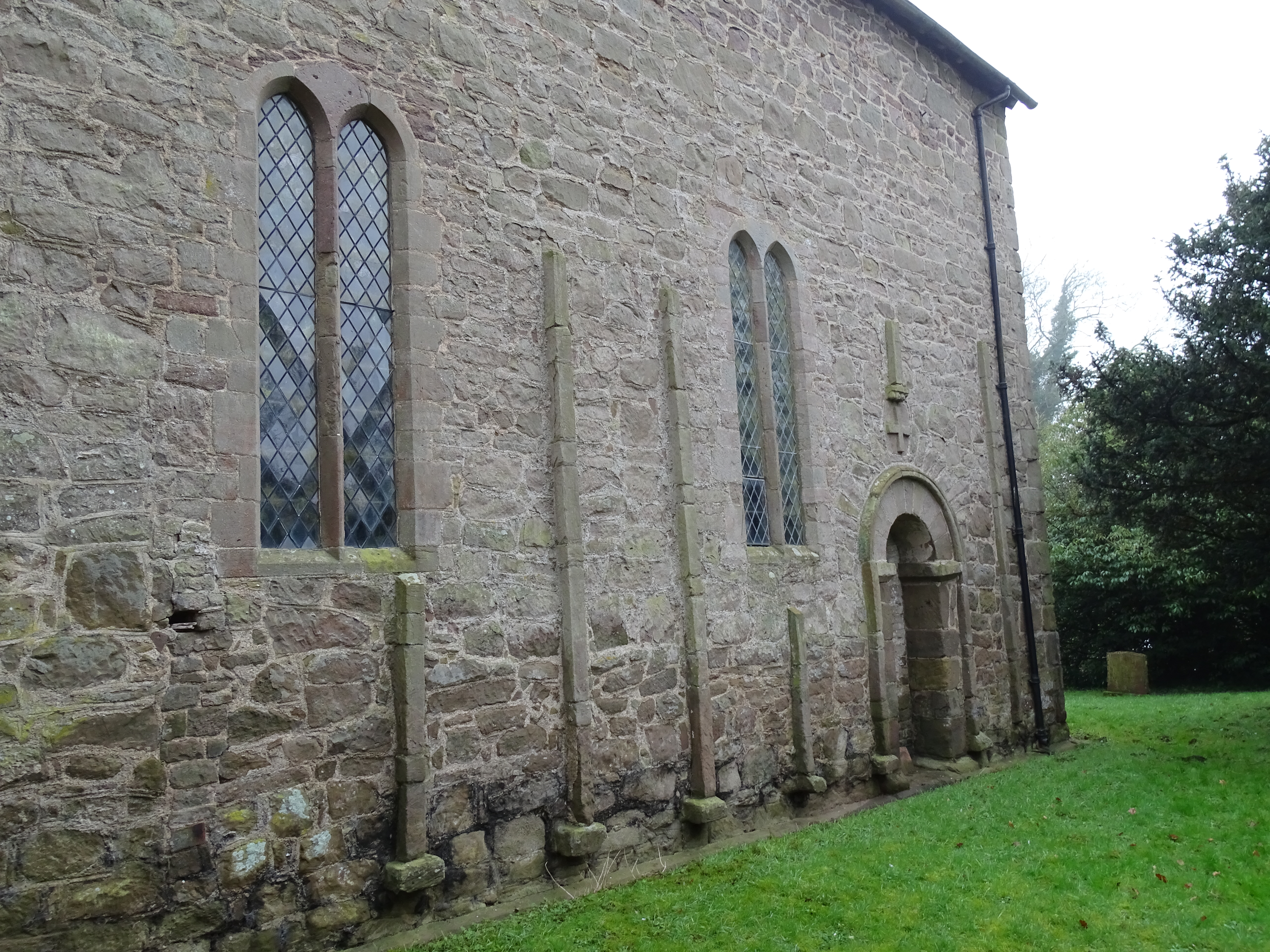
the students about something they might not know about. U3A is the University of the Third Age, so aimed at older people who want to keep their brains ticking over. There are several branches all over the county.
A meeting at SCTG headquarters debated a number of possible options and finally decided that it was time to big-up all those lovely churches with remnants of Anglo-Saxon buildings - we were spoilt for choice. What about Wrockwardine and Wroxeter asked one learned person? We all agreed a good choice, but what other places nearby could we visit. Suffice to say that after a lot of debate we finally came down on South Shropshire.
We had a great day out with coach driver Carl joining in too. We went and admired pilasters on the north and west walls of Stanton Lacy. When the original building was subsumed into the new one they added some columns, somehow they had heard they were all the rage in ancient Greece and Rome!
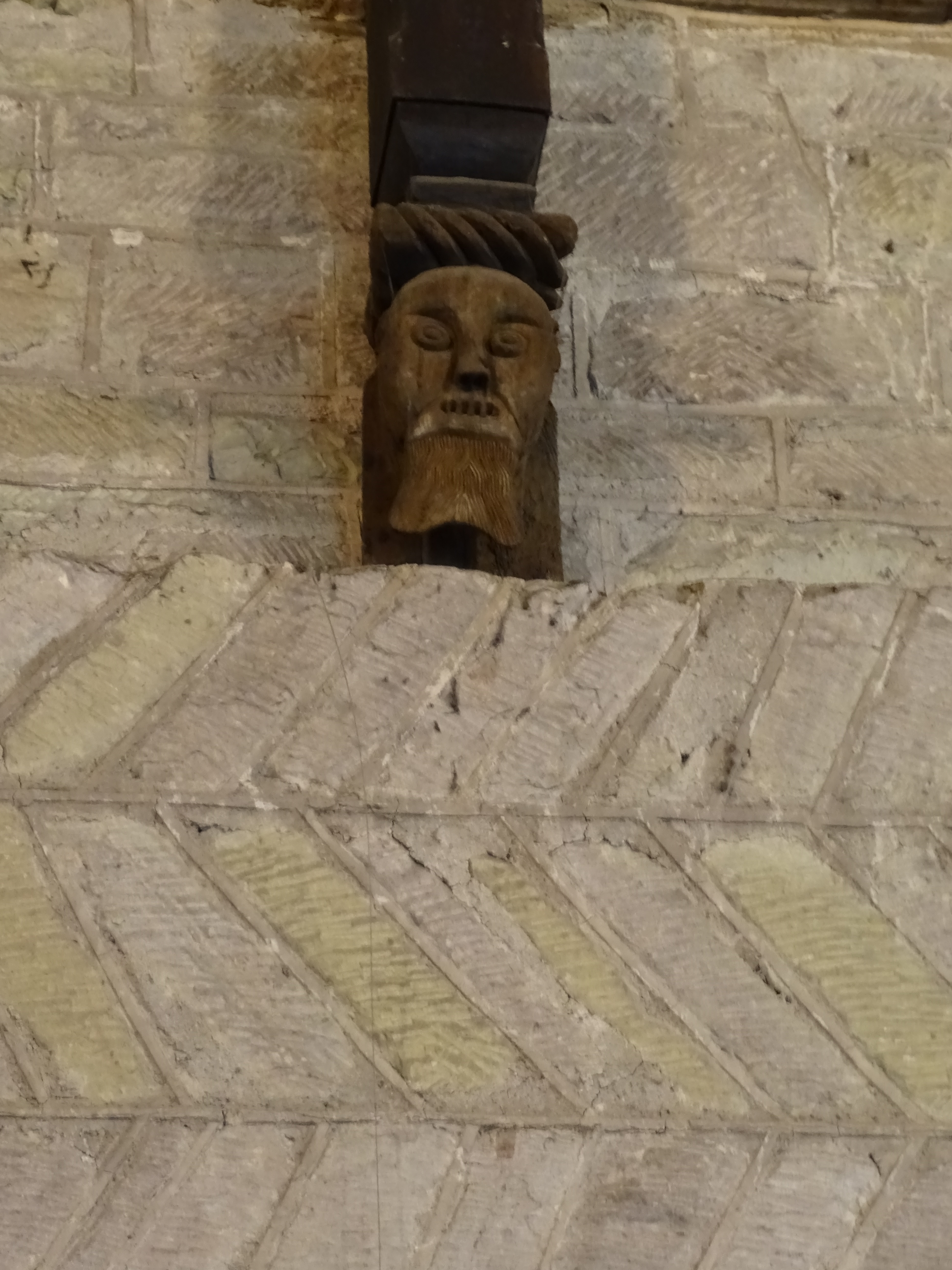
From there we scooted up to the Corvedale road and stopped off in Diddlebury , where herringbone brickwork was met with ‘oos’ and ‘ahs’ so amazing is it. We took time to walk around the outside of these 1000+ year old buildings and admired the stunning views of the beautiful county we live in.
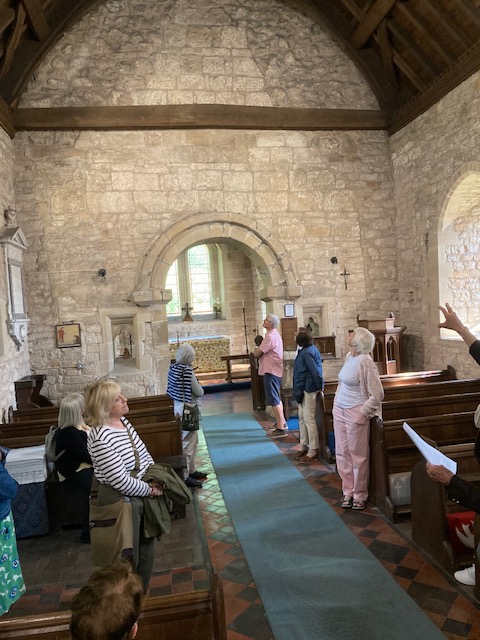
Lunch at The Swan was delicious and plenty of it. It was a quiet drive to Barrow church. This tiny building has a chancel (that’s the part of the building where the altar is) that is almost completely Anglo-Saxon. You can also see the outline on the chancel wall of how small the building was originally.
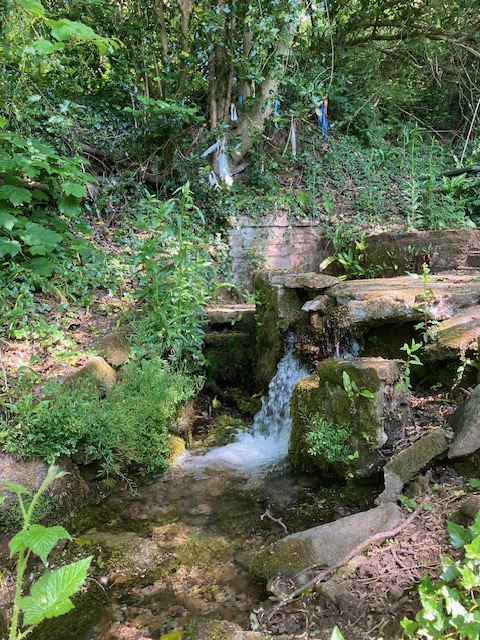
We ended our day in Much Wenlock and learned all about St Milburga. She was a very powerful Anglo- Saxon woman who became the second Abbess of the 2 monasteries, one for men and one for women, built in the 7 th century. The current remains in the town date from a later monastery, destroyed by Henry VIII.
We checked out the Holy Wells in the town too, although if you want to see
a more impressive display of water head to Stoke St Milborough - that’s what an Anglo-Saxon gush of holy water should look like!
With summer here now, this could make a good day out for you too. All the churches are open every day and welcome visitors.
Anni Holden Calver, Secretary of Shropshire Churches Tourism Group (SCTG)
www.discovershropshirechurches.co.uk
Trustee of Caring for God’s Acre and Churchyard Task Team cheerleader!
www.caringforgodsacre.org.uk
MAY 2025
As a trustee of Caring for God’s Acre, the national charity based in Shropshire, which looks after our ancient burial grounds, I am in one most weeks. The volunteers of the Churchyard Task Teams (CTT) are out and about in the north and south of the county, scything, making wood piles for small mammals, checking the dry stone walls are in good order, cutting back the brambles and anything else that needs doing under the professional eye of Alex, our leader.
It’s an enjoyable outing for us volunteers and pleasant at the tea and lunch break, is the chat between the volunteers. We were in Caynham Church last month and someone asked me how churches got their saint’s name. That particular church is dedicated to St Mary. As secretary of Shropshire Churches Tourism Group I can confidently tell you that that is the most popular dedication in the whole county. Three weeks later we were in Bromfield Church, also dedicated to St Mary.
It must have been very strange when stone buildings started appearing in our villages. Once William had conquered after his success at Hastings in 1066, he brought his French building knowledge with him and our churches still stand a thousand years later. St Mary reflects the historic allegiance to Mary, the mother of Jesus. St Peter comes next, Jesus’ right-hand man. But we have some unusual ones too. Cheswardine is dedicated to St Swithun, who was bit of a poster boy as Bishop of Winchester and after his death in 862. His tomb became a place of pilgrimage, miracles happened and he became a saint. There are 54 ancient dedications to him in England. Other unusual names are Gregory the Great at Morville, St Cuthbert at Clungunford, St Oswald in Oswestry and our very own Shropshire Saxon saint, St Milburga at Stoke St Milborough.
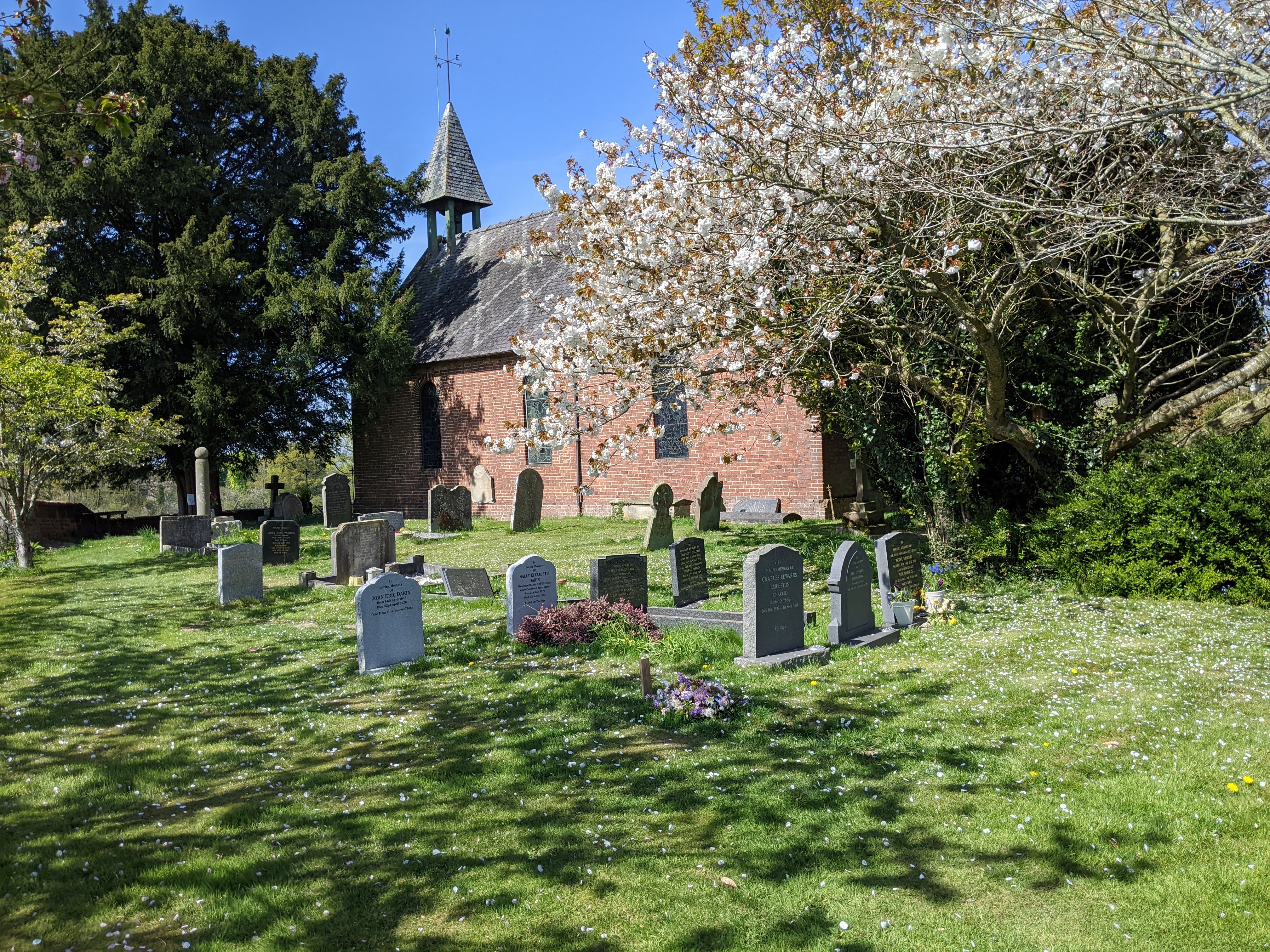
But it’s May now and I want to tell you about a whose feast day is 15th May. He has a unique dedication in the village of Petton, in Shropshire. Isadore was a farm labourer in a village near Madrid, in Spain. He worked there all his life until his death in 1130. He went to church each day and prayed as he worked the plough; holiday time meant a pilgrimage to a local shrine. Many miracles were attributed to him and, nearly 500 years later in 1615, the recovery of the King was attributed to him, a lowly labourer curing a king! He was made a saint and until the millennium no church dedication was Isadore. But Petton decided in 1999 that they would mark the millenium by finally giving their building a name - they chose the humble Isadore.
Anni Holden Calver, Secretary of Shropshire Churches Tourism Group (SCTG)
www.discovershropshirechurches.co.uk
Trustee of Caring for God’s Acre and Churchyard Task Team cheerleader!
www.caringforgodsacre.org.uk
Pic:-St Raphael and St Isidore, Petton
MONTHLY ARTICLE, APRIL 2025
“O to be in England now that April’s there” wrote the poet Robert Browning from his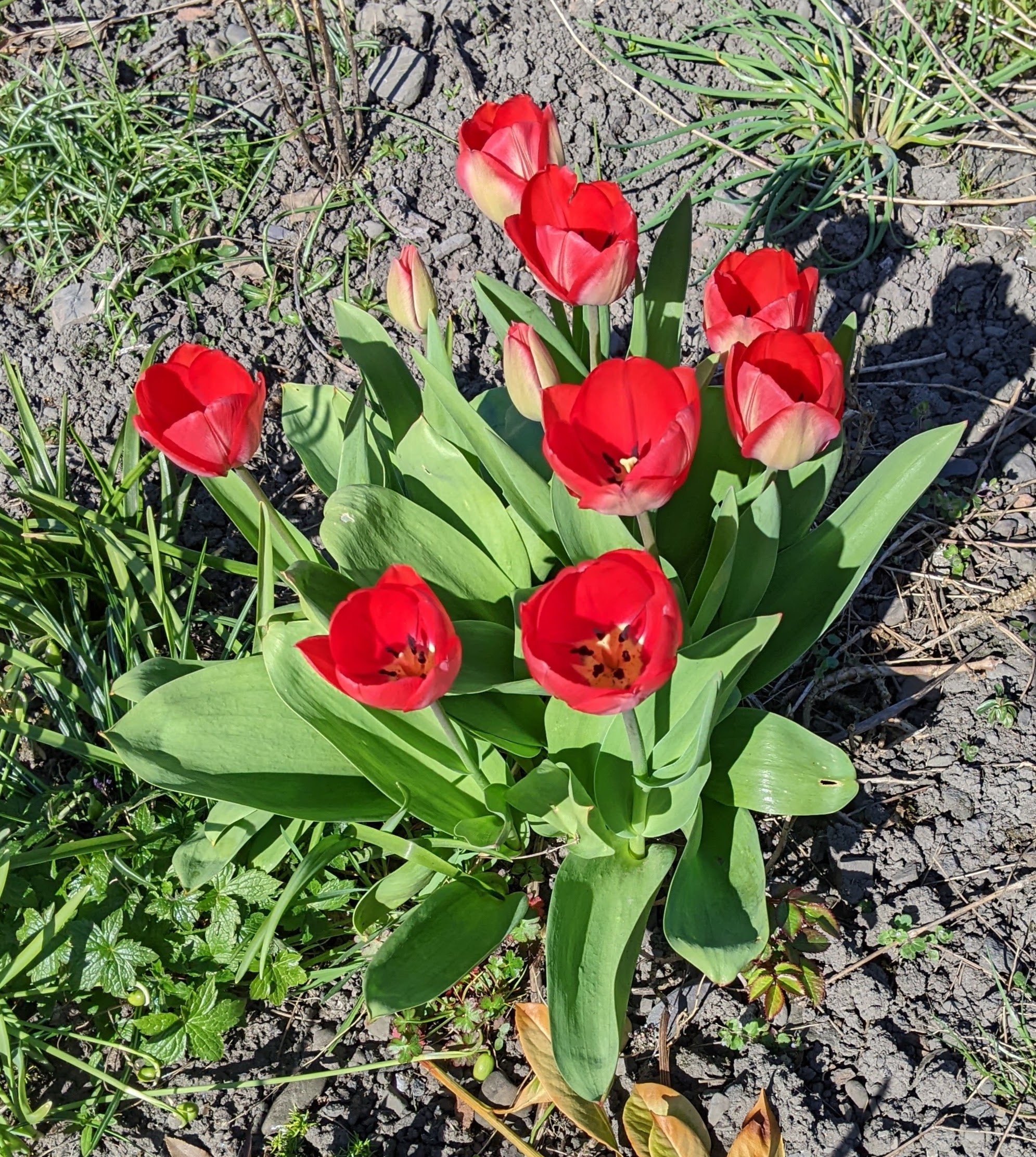 hideaway home in Italy, and I can understand his yearning. I know it’s a month most often associated with showers, although many of the old sayings are not so pessimistic (April wet, good wheat - April and May, key to the year etc). I’m not downhearted either as I think it can be a lovely month, warming up but not yet summer. There is lots of new growth in gardens and hedgerows and a stirring in the veg. patch too.
hideaway home in Italy, and I can understand his yearning. I know it’s a month most often associated with showers, although many of the old sayings are not so pessimistic (April wet, good wheat - April and May, key to the year etc). I’m not downhearted either as I think it can be a lovely month, warming up but not yet summer. There is lots of new growth in gardens and hedgerows and a stirring in the veg. patch too.
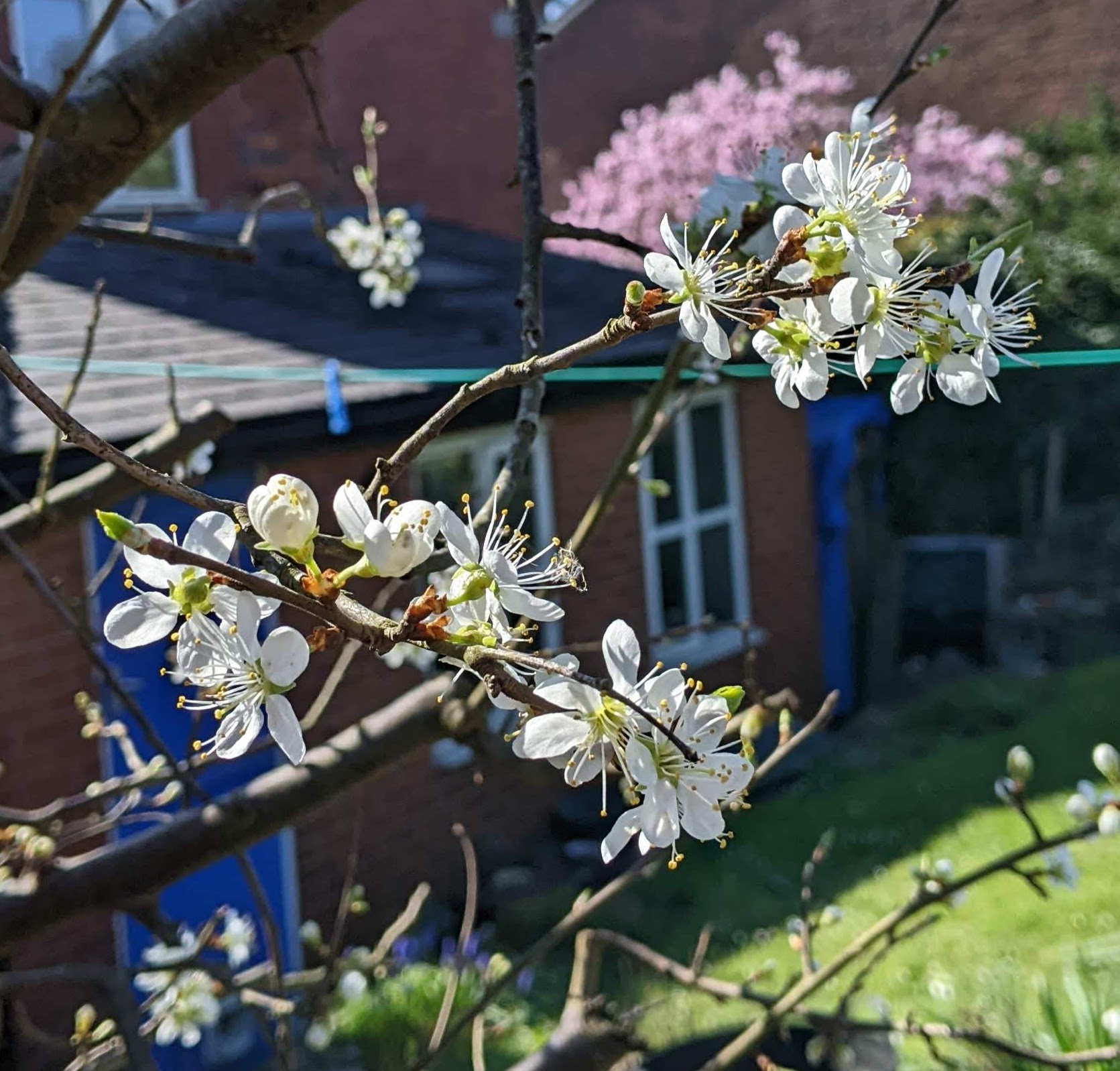 The month is dominated by Easter, a moving date between 22nd March and 25th April, all dependant on the moon! Easter is somewhat different now from the rather solemn religious rituals of my childhood, followed by the joy of Easter day and the chocolate eggs sitting at our places on the dining room table. But it was holiday time, a long weekend which still happens today, although with shops open every day, not a holiday for everyone.
The month is dominated by Easter, a moving date between 22nd March and 25th April, all dependant on the moon! Easter is somewhat different now from the rather solemn religious rituals of my childhood, followed by the joy of Easter day and the chocolate eggs sitting at our places on the dining room table. But it was holiday time, a long weekend which still happens today, although with shops open every day, not a holiday for everyone.
In medieval times and until the end of the 17th century, it was a holiday for everyone. Most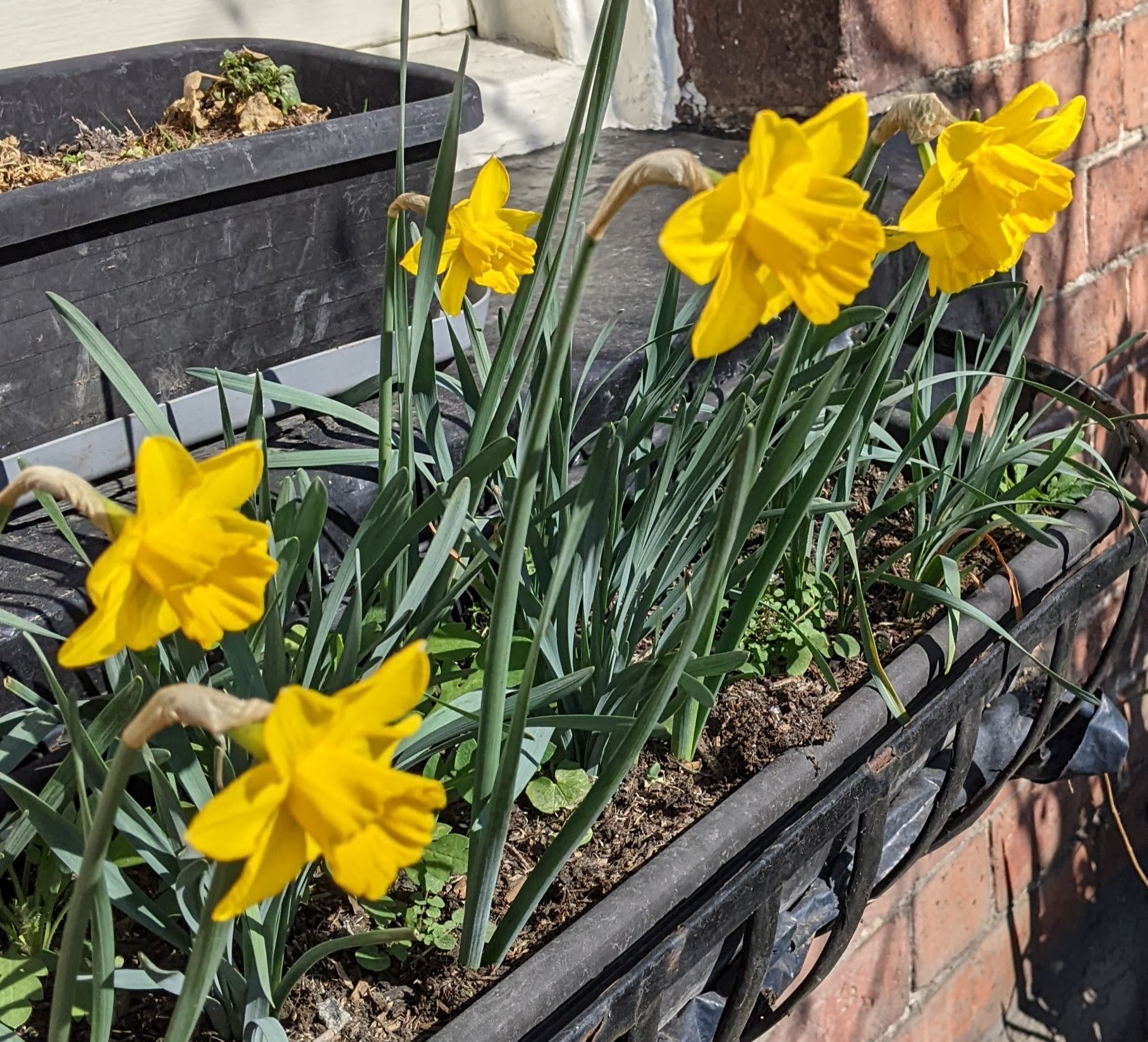 people worked on the land and looked after their animals, or worked for someone wealthier than them doing the hard stuff! Holidays were blesséd relief from the hard work needed to ensure there was enough food for the year.
people worked on the land and looked after their animals, or worked for someone wealthier than them doing the hard stuff! Holidays were blesséd relief from the hard work needed to ensure there was enough food for the year.
Hocktide was the post Easter holidays, which probably dates back before 1066, that moment in history, which was to mark a big change in life, customs and building. But Hocktide, and all the fun associated with it, survived until the late 17th century. It raised money for the church so you might like to rekindle this as a fundraiser for your church now!
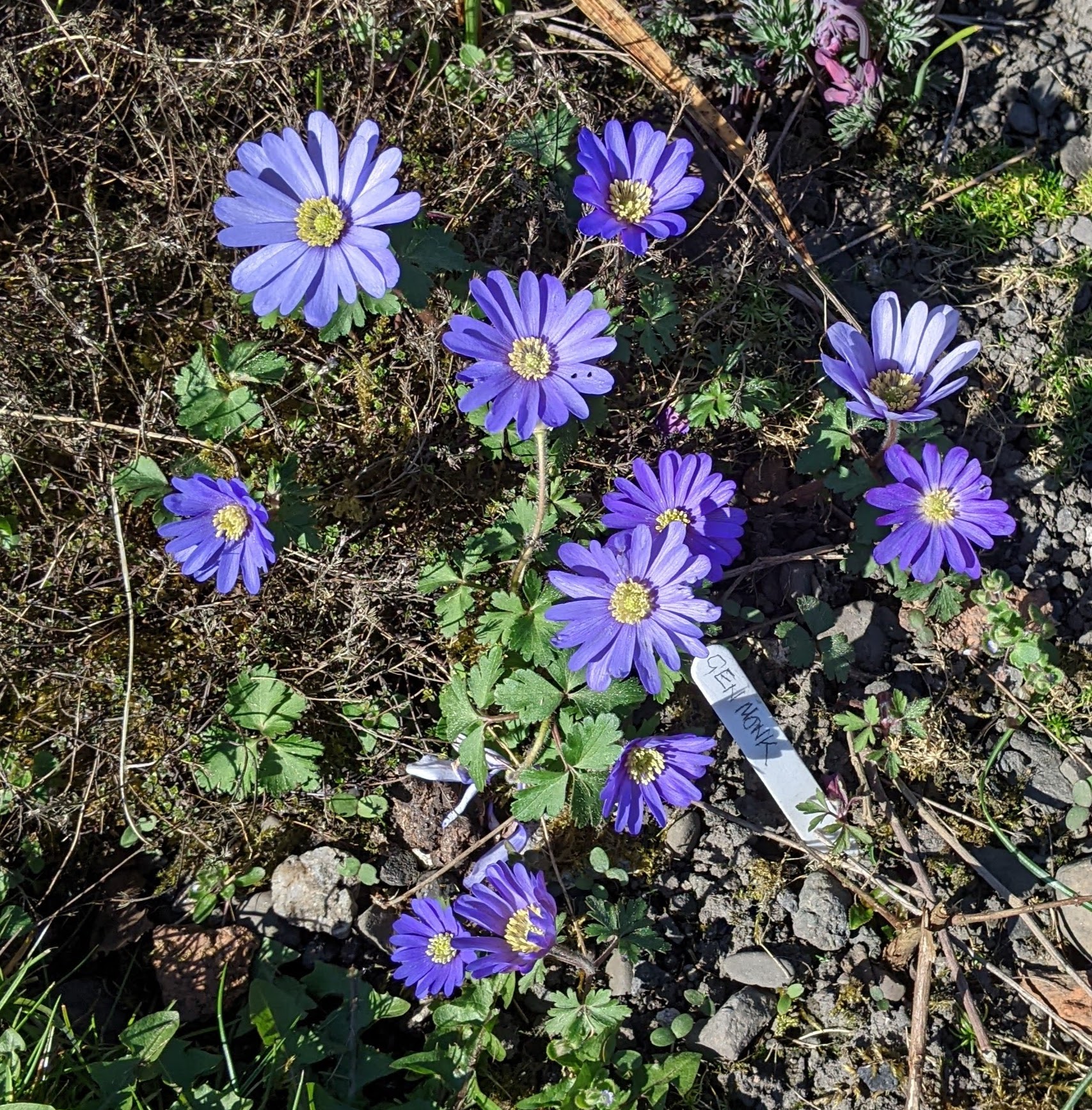 Hocktide took place on the Monday and Tuesday after Low Sunday - the one after Easter Day. Hock-Tuesday was a rent day, along with Michaelmas in September, two very important days in the year. A lot of drinking, eating and dancing was enjoyed, perhaps sometimes a little too jolly. Henry VIII, having sorted the dissolution of the monasteries and a bit more, banned the day as he thought it just encouraged public disorder. What a killjoy that man was. Fortunately, his daughter Elizabeth I reinstated the traditions in 1575.
Hocktide took place on the Monday and Tuesday after Low Sunday - the one after Easter Day. Hock-Tuesday was a rent day, along with Michaelmas in September, two very important days in the year. A lot of drinking, eating and dancing was enjoyed, perhaps sometimes a little too jolly. Henry VIII, having sorted the dissolution of the monasteries and a bit more, banned the day as he thought it just encouraged public disorder. What a killjoy that man was. Fortunately, his daughter Elizabeth I reinstated the traditions in 1575.
So what about that fundraiser? On Hock-Monday, the local men would grab the women and demand a kiss to release them. On Hock-Tuesday it was the women’s turn, but they were a bit cleverer than their men folk and having captured them, demanded money for their release, the sum raised given to the Church for its upkeep for the next year. I am not sure that men and women tying each other up would be acceptable in April 2025 but you might think it could work!!! Let me know if you take up this challenge.
Anni Holden Calver, Secretary of Shropshire Churches Tourism Group (SCTG)
www.discovershropshirechurches.co.uk
Trustee of Caring for God’s Acre and Churchyard Task Team cheerleader!
www.caringforgodsacre.org.uk